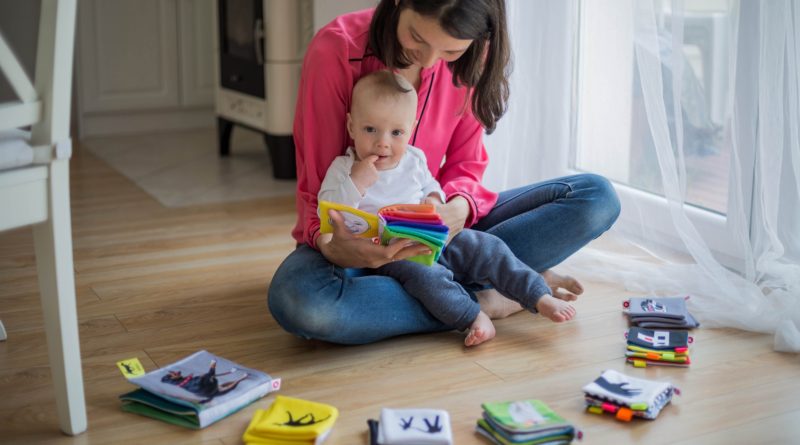How To Teach Your Child To Read
How to teach your child to read is most likely one of the most important things that you will learn that will help your child be successful.
This is something that happens over a long period of time and the sooner that you start with this the better.
In this article I will be going over the steps to help make teaching your child to ready enjoyable and maximize your time so that the time you send with your child helping them learn to read will be the most efficient.
How To Teach Your Child To Read-YouTube
1. Start Reading To Your Child Right Away
The sooner you start reading with your child the better!
One of the best ways to do that is to start reading to your child right away and give them a an opportunity to see you reading which will help them see your love of literacy.
When you’re reading to them you are starting that language connection that really is going to make great leaps and bounds for your child in their reading progress.
The sooner they start seeing and hearing the process of reading it really is going to help with that Marathon that were talking about.
2. Make It Fun And Reward Them
You really have to make it fun!
Reading can’t be a duty and it can’t be a command. You just have to graduate incorporate the reading process and we have to make it fun.
When you make it fun, you can turn the process of reading into games, you can turn it into a competition or turn it into something that they’re going to enjoy. Doing this is going to make them feel like they’re not learning they’re just getting better at something or they are just having fun.
Also rewarding the child for their good work is crutial.
Rewarding your child gives them an opportunity to see everybody appreciates their hard work and that they are doing their best. This will help the reading process so much and will eventually improve their love of reading as children like what they’re good at.
3. Teach The Alphabet
This is one of the very first things that you want to do!
This seems super simple but this is fairly exhaustive and it does take a long time. You’re going to need to do this over a long period of time and starting them out early is really going to make a huge difference.
Your child needs to know the letters.
They need to know the actual letters and the shapes. They of course need to learn the sounds they make. They need to know that Apple starts with an A and so forth. There are so many letters and it seems overwhelming for the child but if you start slowly and introduce these letters and the sounds over and over again the child will start to memorize the letter and their sounds and will be able to incorporate them into their eventual reading.
Some ways to do this is you can play games.
You can show them different things that start with that letter. You can end the night with an alphabet book showing them pictures with letters and singing the alphabet song. Have them pick out things in the house or on a car ride that start with different letters.
When learning the alphabet, if you keep it fun and consistent you will find that your child picks it up surprisingly fast and they will be ready for the next step
4. Help With Phonemic Awareness
Phonics is using the letter sounds to decode a word or to sound out a word.
Phenoms are actually the sound of the letter and Phonics is the process of putting those phemons together to help a child sound out and read a word.
Practicing phonics helps your child and allow them to blend and put letters together to actually make a word.
When your blending the word B-A-T your child is using the phenoms to helps sound out a word to create the BAT.
When your child knows these letters and the sounds that make up a words that is going to allow them to start reading.
They can see a group of letters and put them together to sound out a word.
When you see them sound these words out and they realize that the C-A_T spells CAT their eyes light up and they they feel like geniuses and they are because they’re starting the process of being an amazing reader.
Great ways to help with phonics:
- Flash Card
- Letter Magnets
- Multi-Sensory Activities- Sand Letter, Shaving Cream Letters, Play-Doh letters etc.
- Explore Digraphs
- Play games- Computer or Apps
Another thing that’s crucial and really is the the crux of phonemic awareness is manipulating the sounds and the letters around to help them realize that when you do this it makes different words.
A great example of this and we do this with our youngest daughters in the car all the time is we asked our daughter, ” okay, so if you have the word CAT and you change the C to a B what word is that?”
Now in their little mind, they’re thinking okay so it was CAT but now I know that the C has now changed to B the word is going to change.
With the first letter changing to B the word CAT now turns into BAT.
This is something that is really amazing to them that they can change just one letter and make it a completely different words.
Through practice this will be the foundation that leads them to greater phonemic and reading progress.
5. Work on Sight Words
The next step is going to be helping your child with sight words.
Sight words are words that they really can’t sound out.
Once they get to the certain level, they are going to realize that that they are amazing at sounding out small words and they getting good at making new words they eventually get to a situation where they cannot sound out certain work and they could get frustrated if they don’t understand the importance of sight words.
Sight words are words like:
- a, an, at, are, as, at, and, all, about, after
- my, made, may, make, more, many, most
- the, to, they, this, there, them, then, these, two, time, than, that, their
- was, with, what, were, when, we, which, will, would, words, where, water, who, way
Teaching your child some of these sight words is really is going to make their love of reading grow because they can read fluently and they can read without having to stop too much because they know these difficult to sound out sight words already.
For a great resource for Sight words check out Sightwords.com
6. Make Activities That Are Multi-Sensory
Another great strategy is using multi-sensory learning and activities.
Trying to make a lot of these activities as multi-sensory as possible will help your child get the most out of their practice and help them master these processes quicker
When only one of the learning styles is used it can hurt a child that might learn better though another style.
For example, if a child is a more suitable to visual learning they will not do as well with just hearing the word vs seeing the word on a flashcard or on a computer game.
Sometimes kids need to use the sand or the shaving cream to help create letters or words
Other kids even do great with sandpaper letters.
Being able to feel it allows them for their little brain to solidify and kind of download that when making a letter or word the grit of the Sandpaper on their finger helps them realize in their little brain that letter is a “B”.
The feeling that occurs with some of these multi-sensory activities helps the brain make the appropriate connection that correlates with each specific letter or word.
Kids just learn better with different avenues of learning.
When you’re working with your child you should be able to decode for yourself get a formula for your child for which learning style works best for them.
When they are learning at their maximum potential because you are giving them an opportunity to learn through the educational techniques that works best for them it make learning not only more efficient but more fun!
7. The Power Of Modeling
One of the things that really is is crucial for success is parental modeling.
I’ve always said from day one is:
The number one predictor of a child success in school is the priority that the parent puts on education
BestKidsSolutions
When your child sees that this is important to you through modeling it will be important to them.
When they realize that this is something that you’re willing to take your time with as a parent or a family member they realize that this is important and that they are also going to see that as important.
This is just going to set a foundation for the love of learning and success throughout their whole life.
By doing these techniques subconsciously you are showing your child that you believe that education is important and that you believe in them.
When you spend your time with them you are reinforcing to them that they are important and there education is a priority.
Even if they’re struggling or if they’re having a hard time with reading, you are showing them that you think that they’re important and you are taking the time to help them and that is just absolutely crucial!
For another great resource on how to help your child be successful even when they are having reading difficulties check out our article: How To Help A Child With Dyslexia At Home
Please Leave A Comment Below!!
Please leave a comment below and let us know how we can help you achieve reading success for your child.
Also please leave us a comment if there is something that has really helped your child in the past and we will add it to our list!




